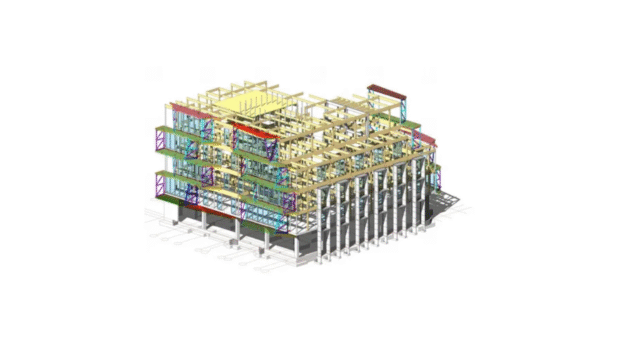Design in New York is competitive. Let’s be honest—this city runs on bold ideas and tighter deadlines. So, staying ahead as a designer here? It’s no easy feat. But smarter modeling tools are changing the game for many creative pros across the boroughs. These tools are more than flashy software—they’re the quiet assistants that keep designers ahead.
In that fast-moving energy of NYC, firms tapping into revit bim services are starting projects smarter, with fewer hiccups down the road.
1. Cut the Guesswork from the Start
You know what slows projects down? Unclear starts. Smart modeling tools provide a crystal-clear roadmap from day one. Designers can look at a model and immediately grasp structure, form, and impact. No need to go back and forth with rough sketches or endless revisions. In New York’s fast market, saving those hours matters.
Tools like Revit and Rhino don’t just draw—they communicate. You can see the full layout, tweak it live, and get client feedback in real time.
2. Collaboration Gets Real-Time and Less Painful
Ever tried collaborating across three firms with different ideas, goals, and locations? Yeah—it’s a headache. Smarter modeling platforms let designers, engineers, and contractors work together on a shared model. That cuts miscommunication big time.
Whether the team’s working in the Bronx or out on Long Island, they’re looking at the same live model. Changes sync instantly. Mistakes? Found early, not weeks later.
3. Visualization Goes from Meh to Wow
Clients are picky. Especially here in NYC, where expectations run high. Instead of flipping through 2D blueprints, smart tools let you present a project in full 3D. Clients can walk through the space virtually. They can actually see what that loft in SoHo will look like before one brick is laid.
That level of clarity builds trust fast. Plus, when clients see the vision early, they get excited—and on board.
4. Designers Save Time Without Cutting Corners
Let’s be real—no one’s got time for redrawing a plan five times. These tools automate a lot of the stuff that used to eat up hours. Need to shift a wall? The dimensions adjust automatically. No manual recalculations.
Firms in Manhattan and Brooklyn are already using these features to juggle more clients without sacrificing quality. It’s efficiency without burnout. And honestly, that’s gold.
5. Smart Libraries Make Reuse Easy
One of the coolest things? Built-in libraries. Think of them like design cheat codes. You need a specific window or fixture? It’s already modeled, detailed, and ready to plug into your plan. No rebuilding from scratch.
For busy studios downtown, this means projects roll out quicker. Especially on tight deadlines where speed and precision matter equally.
6. Catch Issues Before They Become Expensive Problems
You know that feeling when a contractor calls mid-project with a “problem”? Usually means delays and extra costs. But advanced modeling tools help catch those issues before you even get to that stage.
Clashes between HVAC and structural beams? The software sees it before your crew does. That alone can save thousands—not to mention your reputation.
This is why more NY-based studios are shifting toward smarter platforms. It’s just less risky.
7. Stay Flexible, Always
Clients change their minds. Trends shift. Regulations update. That’s just part of the game. What’s great about smarter modeling is how easy it is to adapt. You don’t need to start from scratch every time something shifts. Just adjust the model.
It’s super useful for NYC-based designers who work across boroughs with different building codes. A few clicks, and your model reflects updated zoning, materials, or client changes.
But It’s Not Just About the Software
Let’s not forget—the tool is only as good as the hands using it. Designers who stay curious, keep learning, and adapt to tech quickly? They’re the ones thriving. That’s especially true in a fast-moving place like New York.
Having a go-to bim modeling service on board also helps keep things smooth. You don’t need to be an expert in every tool. Sometimes, the smart move is knowing who to call.
Outsourcing specific modeling tasks to pros frees you up to focus on design, not troubleshooting. And that, in this industry, is a win.
Local Know-How Still Reigns
Here’s something a lot of out-of-state firms miss—every NYC project has local quirks. Old buildings, changing codes, quirky clients. A general plan doesn’t always cut it.
That’s why partnering with a Model design company that knows New York inside-out is so helpful. They’ve seen it all. Walk-ups in Queens, prewar buildings in Harlem, industrial lofts in DUMBO. Their insights can make or break your timeline.
That local experience adds a layer of confidence to your workflow that generic services just can’t provide.
Final Thoughts
Smarter modeling isn’t a luxury anymore—it’s a must. Whether you’re solo freelancing in a shared Brooklyn studio or leading a big-name Manhattan firm, these tools can elevate your work.
They let you focus on what matters—your creativity, your client, and your time. And in a city where every minute and square foot counts, that’s everything.
So if you haven’t tapped into these tools yet, now’s the time. Because New York doesn’t slow down. And neither should you.







